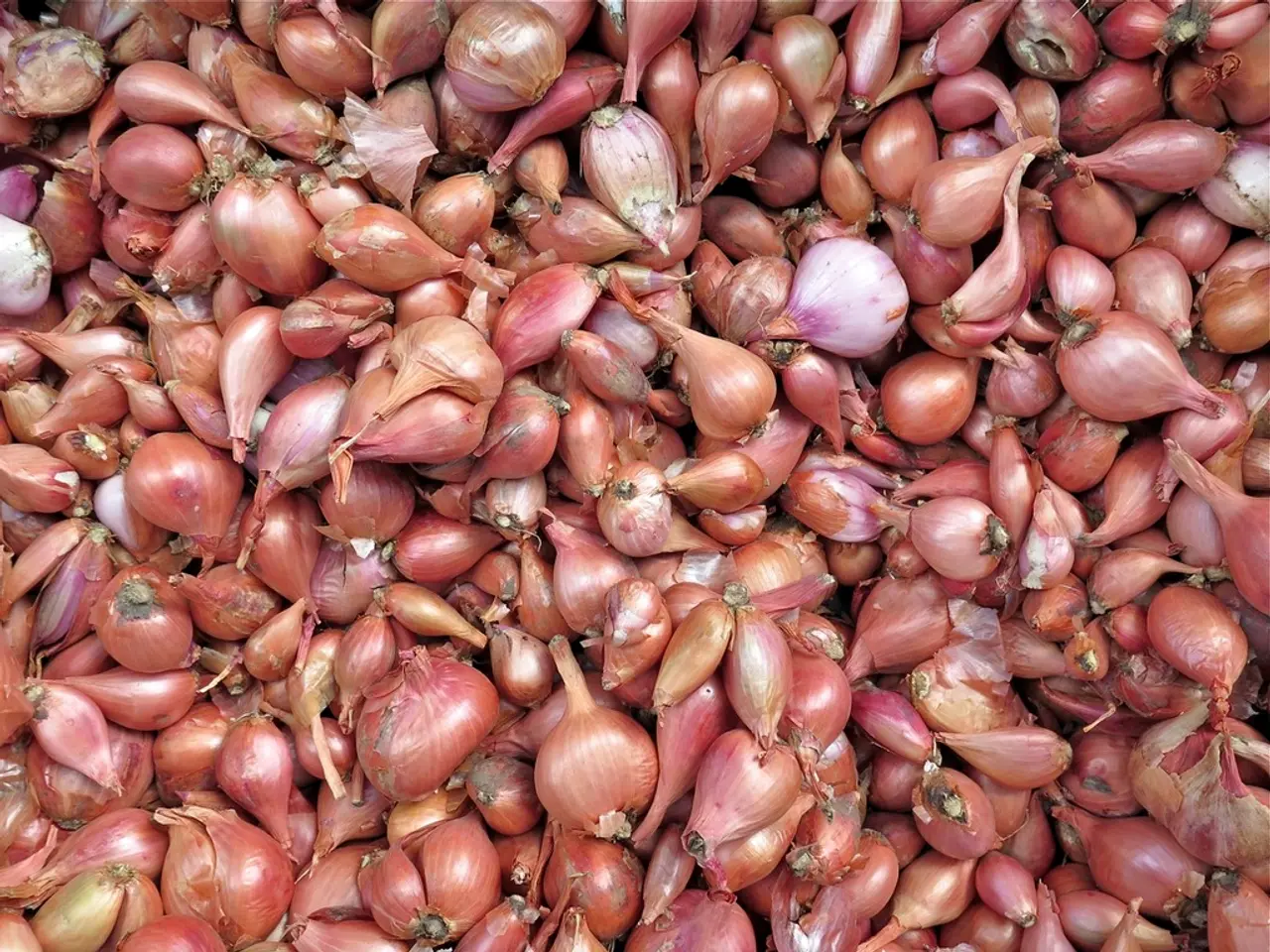Mastering Onions: In-depth Guide for Cultivating and Storing Onions Properly
Onions, a staple in many kitchens, can be grown in various regions and conditions, providing a constant supply of fresh produce. Here's a guide to help you grow, preserve, and choose the right onion type for your garden.
Onions come in different colours – white, yellow, and red – and various types, including perennial onions. Perennial onions, such as the Walking Onion and Welsh onion, require minimal maintenance and will return year after year. These onions propagate themselves by dropping flowerheads or developing new clumps you can harvest.
When it comes to sunlight exposure, onions need at least 6 hours of direct sunlight daily for a good harvest. Green onions, however, require 12–14 hours of light for optimal growth. The amount of daylight required for bulb production varies among onion types: long-day onions (14 or more hours of daylight) are ideal for northern regions, intermediate-day onions (12–13 hours) for regions with moderate day-length, and short-day onions (11–12 hours) for mild-winter areas like the south.
Soil type and fertility are crucial. Onions prefer fertile, well-drained soils, with sandy loams being ideal due to their low sulfur content, which affects bulb pungency.
Temperature is another essential factor. Onions require warm temperatures and soil, around 15-20°C (59-68°F), to germinate. After germination, they need cool weather to grow and warm weather to form a bulb.
Onions can be grown in the winter sowing container until it's time to plant them outdoors. The commonly used cooking onion is medium-sized, hardy, easy to grow, and can be stored for a long time. Scallions, or green onions, are an excellent choice for those who have difficulty growing onion bulbs or are simply interested in greens. They can be planted early in the spring and will continue to grow throughout the summer, giving you a constant supply of fresh greens.
Onions require moisture to get established in spring but prefer well-drained soil to avoid rot. Once established, they need protection against onion maggots, which can be achieved by using insect mesh.
Onions need to be cured for several weeks before storing to ensure they are dry. For storage onions, wait until the greens fall over and dry before harvesting. Onions grown from onion sets are best eaten fresh from the garden, as they do not store as well as onions grown from seeds. However, onions grown from sets can still be stored for a couple of months with proper curing.
Onions can be frozen to preserve them for use in recipes later. Shallots, with their sweeter taste, are a worthwhile addition to any diet and can be grown from sets or seeds.
In summary, to grow onions optimally in a specific region, choose an onion type matching the local day-length pattern (long-day, intermediate-day, or short-day), provide at least 6 hours of direct sunlight daily in fertile, well-drained soil conditions, and maintain the soil moisture balance. With these tips, you'll be well on your way to a bountiful onion harvest.
[1] Onion Growing Guide [2] Onion Growing Tips [3] How to Grow Onions [4] Onion Varieties for Different Day Lengths [5] Green Onion Growth Requirements
- Perennial onions like Walking Onions and Welsh onions require minimal maintenance and will return year after year, propagating themselves through dropping flowerheads or developing new clumps.
- Onions need at least 6 hours of direct sunlight daily for a good harvest, while green onions require 12–14 hours of light for optimal growth.
- Soil type and fertility are crucial for growing onions, with sandy loams being preferred due to their low sulfur content.
- Onions grow best in warm temperatures and soil, around 15-20°C (59-68°F), but require cool weather to grow and warm weather to form a bulb.
- The commonly used cooking onion is medium-sized, hardy, easy to grow, and can be stored for a long time, while scallions are an excellent choice for those interested in greens.
- Onions require well-drained soil and moisture to get established in spring, but protection against onion maggots may be necessary using insect mesh.
- Onions need to be cured for several weeks before storing, and onions grown from sets are best eaten fresh, as they do not store as well as onions grown from seeds.
- Onions can be frozen to preserve them for use in various food-and-drink and home-and-garden recipes, and shallots, with their sweeter taste, are a worthwhile addition to any lifestyle.





